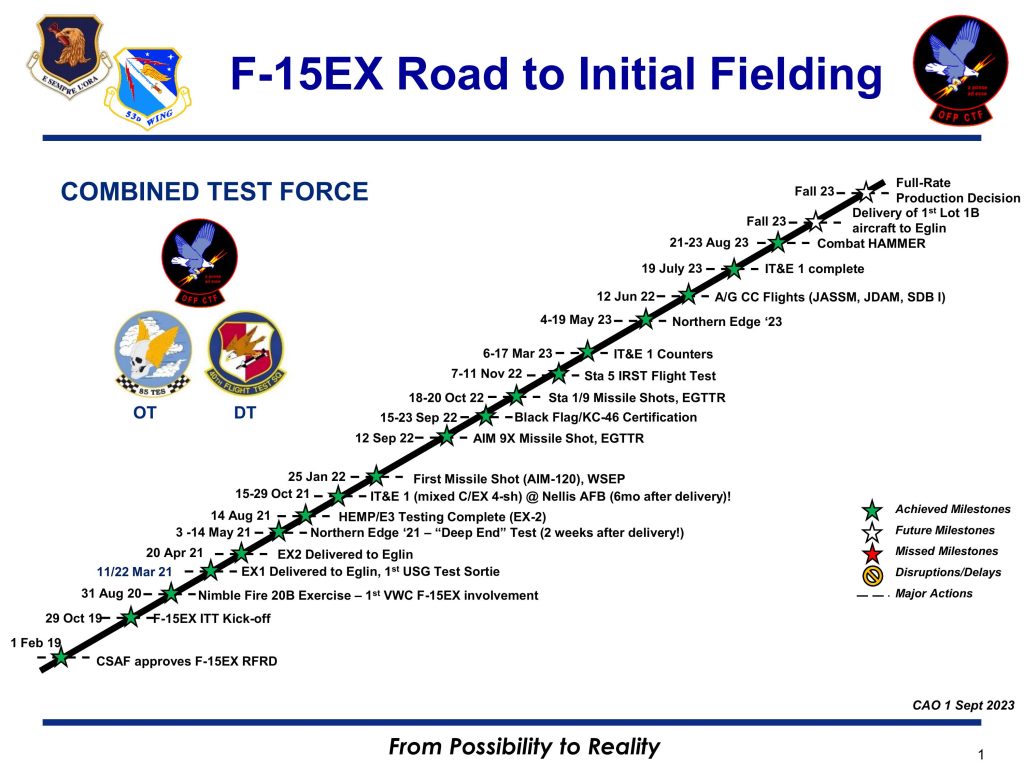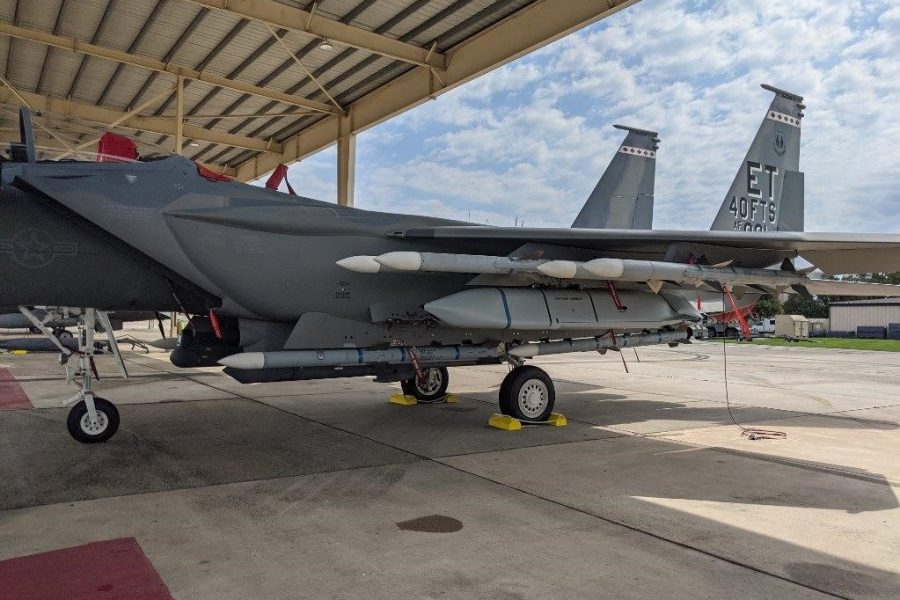Editor’s Note: This story was updated Sept. 4 after the 53rd Wing corrected the number of JASSM missiles released by the F-15EX.
The F-15EX Eagle II has completed the first phase of its hybrid developmental/initial operational test and evaluation program with the launch of an AGM-158 Joint Air-to-Surface Standoff Missile, the 53rd Wing announced Aug. 30.
“This event marks the conclusion” of F-15EX Integrated Test and Evaluation Phase I, the Air Force said in a press release.
“Data from this phase will be analyzed by the Air Force Operational Test and Evaluation Center and Office of the Secretary of Defense Director of Operational Test and Evaluation for final reporting to steer a full rate production decision determination in the coming months,” the service said.
The next major milestone for the program is the delivery of the first Lot 1B aircraft to Eglin Air Force Base, Fla., in the next few weeks, with the full-rate production decision expected after that during the fall.

The JASSM was launched during exercise Combat Hammer, which took place at Hill Air Force Base, Utah, from Aug. 14-25. Details of the shot—the targets, ranges, etc.—are classified, but it was “heavily evaluated,” from weapon buildup to employment and analysis of the missile’s routes to target, a 53rd Wing spokesperson said.
The JASSM has a range of about 230 miles, according to an Air Force fact sheet.
“Everything went perfectly, providing us with the data proving the EX could easily employ three JASSMs in combat,” the spokesperson said, clarifying that only one JASSM was actually shot.
The JASSM shot was executed concurrently with the 53rd Wing’s Weapons System Evaluation Program (WSEP), which required a collaborative effort between the 83rd and 86th Fighter Weapons Squadrons.
The F-15EX is the first ever Air Force aircraft to undergo an Integrated Test and Evaluation program. The combination of the IOT&E and DOT&E effort is unique to the program, in that existing test data from the legacy F-15C/D and F-15E can be compared with data from the new EX, with special focus on the EX’s unique new features, such as its advanced processor and fly-by-wire control system. The EX also has more weapon stations than the F-15E, allowing it to carry more ordnance.
The idea behind concurrent DOT&E and IOT&E is to save time and field the F-15EX as quickly as possible, as it is replacing F-15C/Ds that must be withdrawn from service because of structural fatigue.
“The 53WG’s goal is to deliver a fielding recommendation to (Air Combat Command) for the F-15EX as quickly as possible, and executing testing with a fully-integrated DT/OT team is the best way to do it,” the 53rd spokesperson said.
She said the B-21 bomber program will undergo a similarly accelerated and combined developmental and initial operational test effort.
In November 2022 tests, the EX demonstrated it can carry up to 12 AIM-120 AMRAAM air-to-air missiles.
“Proving the F-15EX capability to employ three JASSMs after witnessing validation of the … air-to-air dominance role it can play with a 12-AMRAAM loadout is incredible,” Maj. Calvin Conner, 85th Test and Evaluation Squadron F-15 division commander, said in a statement.
“The firepower a four-ship of F-15EXs brings to a combatant commander is tremendous,” he added.
The Air Force plans to buy 104 F-15EXs, although that number could rise to 110 if some changes to the fiscal year 2024 defense bill are enacted. The Air Force was originally expected to start taking deliveries beyond the first two test aircraft earlier this year, but quality issues at Boeing’s St. Louis, Mo. plant have caused a six-month delay in handing over the initial production jets. According to a June audit by the Government Accountability Office, Boeing workers mis-drilled some of the holes on initial production aircraft canopies, requiring rework.
The integrated test effort is being carried out by combined test teams from the 40th Flight Test Squadron; 85th Test and Evaluation Squadron; and Operational Flight Program Combined Test Force.
